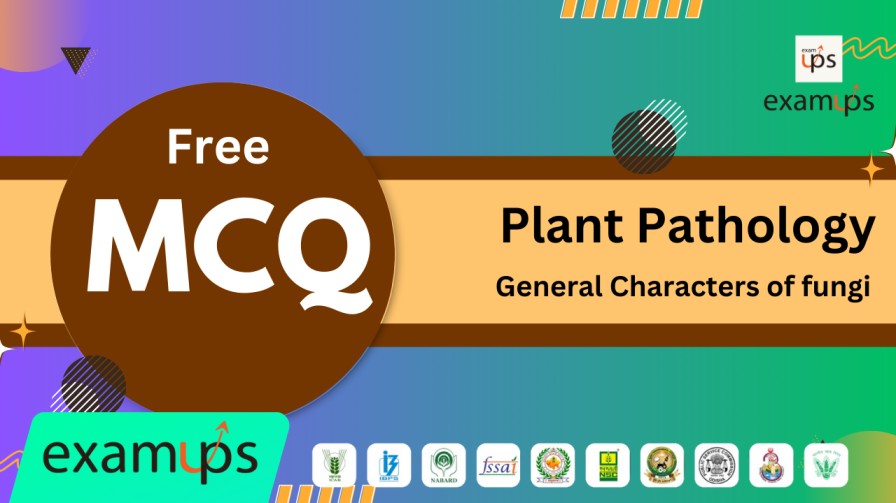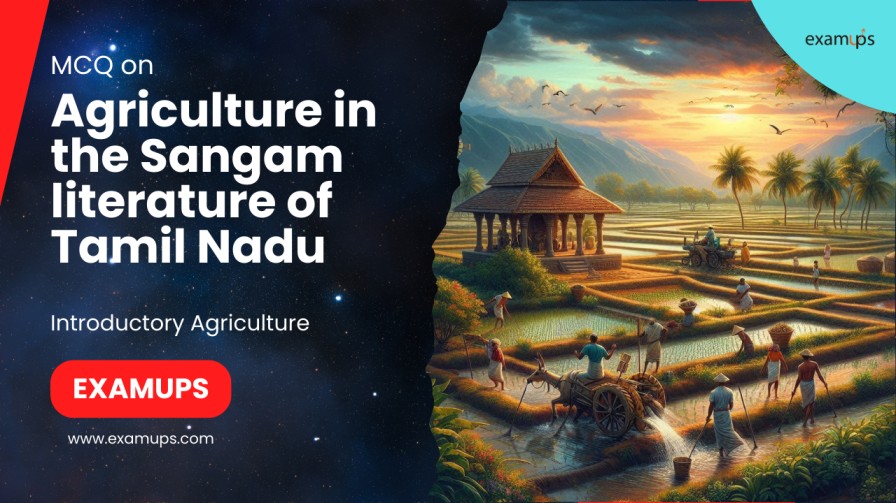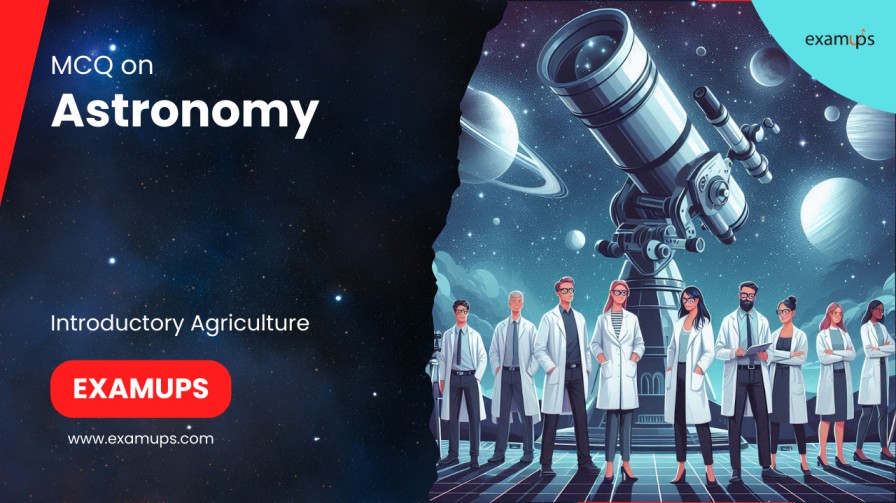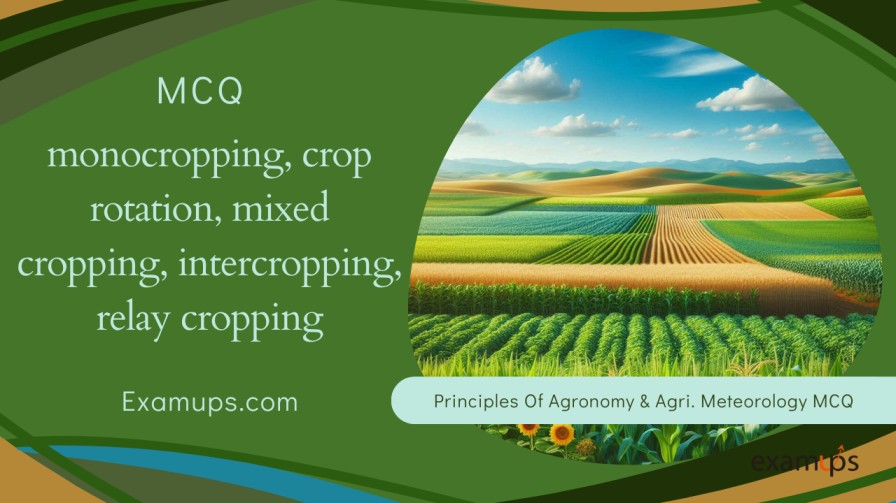1. Fungi are classified as:
a) Prokaryotic and chlorophyllous
b) Eukaryotic and achlorophyllous
c) Prokaryotic and photosynthetic
d) Eukaryotic and photosynthetic
Answer: b) Eukaryotic and achlorophyllous
2. What are the microscopic filaments forming a fungal body called?
a) Thalli
b) Hyphae
c) Spores
d) Vacuoles
Answer: b) Hyphae
3. The network of hyphae forming the fungal body is known as:
a) Thallus
b) Haustoria
c) Mycelium
d) Septa
Answer: c) Mycelium
4. What is the main component of fungal cell walls?
a) Cellulose and lignin
b) Chitin and glucans
c) Trehalose and glycogen
d) Sugar alcohols and lipids
Answer: b) Chitin and glucans
5. Yeasts are an example of:
a) Filamentous fungi
b) Unicellular fungi
c) Septate fungi
d) Coenocytic fungi
Answer: b) Unicellular fungi
6. The thallus that shows differentiation into vegetative and reproductive parts is called:
a) Holocarpic
b) Eucarpic
c) Intercellular
d) Intracellular
Answer: b) Eucarpic
7. Which type of fungal thallus converts entirely into reproductive structures?
a) Eucarpic
b) Holocarpic
c) Dikaryotic
d) Homokaryotic
Answer: b) Holocarpic
8. What is the diameter range of most fungal hyphae?
a) 1-2 μm
b) 3-4 μm
c) 5-10 μm
d) 12-15 μm
Answer: c) 5-10 μm
9. Hyphae without cross walls are referred to as:
a) Septate
b) Coenocytic
c) Intercellular
d) Intracellular
Answer: b) Coenocytic
10. The intracellular mycelium of parasitic fungi:
a) Grows only on the host surface
b) Spreads between host cells
c) Penetrates host cells
d) Remains free-living in the environment
Answer: c) Penetrates host cells
11. Fungi that obtain nutrients from their host cells using specialized structures are:
a) Haustorial fungi
b) Mycelial fungi
c) Symbiotic fungi
d) Saprophytic fungi
Answer: a) Haustorial fungi
12. Mycelium with genetically identical nuclei is called:
a) Monokaryotic mycelium
b) Homokaryotic mycelium
c) Dikaryotic mycelium
d) Coenocytic mycelium
Answer: b) Homokaryotic mycelium
13. A dikaryotic mycelium is characterized by:
a) A single nucleus in each hyphal compartment
b) Genetically identical nuclei
c) A pair of nuclei in each hyphal compartment
d) Absence of cross walls
Answer: c) A pair of nuclei in each hyphal compartment
14. Which fungal structure absorbs nutrients from the host through its cell wall or membrane?
a) Intracellular mycelium
b) Haustoria
c) Intercellular mycelium
d) Hyphal wall
Answer: c) Intercellular mycelium
15. All fungi are incapable of:
a) Reproducing sexually
b) Synthesizing organic compounds
c) Photosynthesis
d) Storing carbohydrates
Answer: c) Photosynthesis
16. Which of the following is an example of a eucarpic fungus?
a) Yeast
b) Pythium aphanidermatum
c) Synchytrium endobioticum
d) Rhizopus stolonifer
Answer: b) Pythium aphanidermatum
17. The life cycle phase associated with a monokaryotic mycelium is:
a) Diplophase
b) Haploplase
c) Dikaryophase
d) Holophase
Answer: b) Haploplase
18. Which of the following best describes fungi?
a) Phototrophic and chemoautotrophic
b) Chemotrophic and achlorophyllous
c) Saprophytic and autotrophic
d) Phototrophic and heterotrophic
Answer: b) Chemotrophic and achlorophyllous
19. What are the cross walls dividing fungal hyphae into compartments called?
a) Lumen
b) Septa
c) Mycelium
d) Thallus
Answer: b) Septa
20. A characteristic storage compound in fungi is:
a) Starch
b) Glucose
c) Trehalose
d) Fructose
Answer: c) Trehalose
21. A heterokaryotic mycelium contains:
a) A single type of nucleus
b) Genetically identical nuclei
c) Nuclei of different genetic constituents
d) A pair of nuclei in each hyphal compartment
Answer: c) Nuclei of different genetic constituents
22. Fungal cells that contain more than two nuclei are referred to as:
a) Monokaryotic
b) Dikaryotic
c) Multinucleate
d) Coenocytic
Answer: c) Multinucleate
23. The transverse septa in fungal hyphae serve to:
a) Store nutrients
b) Divide hyphae into compartments or cells
c) Provide rigidity to the hyphae
d) Aid in photosynthesis
Answer: b) Divide hyphae into compartments or cells
24. Which type of septa is formed in association with nuclear division?
a) Adventitious septa
b) Primary septa
c) Dolipore septa
d) Parenthosomes
Answer: b) Primary septa
25. Dolipore septa are primarily found in:
a) Basidiomycetes
b) Zygomycetes
c) Chytridiomycetes
d) Oomycetes
Answer: a) Basidiomycetes
26. The cap-like structure associated with dolipore septa is known as:
a) Plasma membrane
b) Parenthosome
c) Hyphopodium
d) Haustorium
Answer: b) Parenthosome
27. What is the chief component of the fungal cell wall in higher fungi?
a) Cellulose
b) Pectose
c) Chitin
d) Glycogen
Answer: c) Chitin
28. The apex of fungal hyphae, rich in vesicles, is termed as:
a) Dolipore
b) Appressorium
c) Apical vesicular complex (AVC)
d) Rhizoid
Answer: c) Apical vesicular complex (AVC)
29. Rhizoids primarily function as:
a) Structures for photosynthesis
b) Organs of reproduction
c) Anchoring and absorbing structures
d) Storage organs
Answer: c) Anchoring and absorbing structures
30. Rhizoids are commonly found in:
a) Basidiomycetes
b) Ascomycetes
c) Oomycetes and Zygomycetes
d) Uredinales
Answer: c) Oomycetes and Zygomycetes
31. The fungal structure that helps attach the hypha to the surface of a host is called:
a) Rhizoid
b) Appressorium
c) Haustorium
d) Hyphopodium
Answer: b) Appressorium
32. Haustoria are specialized structures that:
a) Store nutrients for the fungus
b) Penetrate host cells to absorb nutrients
c) Help in the dispersal of fungal spores
d) Anchor the fungus to the substrate
Answer: b) Penetrate host cells to absorb nutrients
33. The shape of haustoria can be:
a) Knob-like, balloon-like, or branched
b) Cylindrical only
c) Spherical only
d) Tubular only
Answer: a) Knob-like, balloon-like, or branched
34. Hyphopodia are structures that:
a) Assist in spore production
b) Anchor hyphae to the host
c) Function as absorbing structures
d) Form the primary septa
Answer: c) Function as absorbing structures
35. In which fungi are hyphopodia commonly found?
a) Colletotrichum
b) Ectophytic fungi
c) Downy mildew fungi
d) Oomycetes
Answer: b) Ectophytic fungi
36. The fungal organelle responsible for producing vesicles at the hyphal tip is:
a) Mitochondria
b) Golgi apparatus
c) Nucleolus
d) Endoplasmic reticulum
Answer: b) Golgi apparatus
37. Which type of storage products are commonly found in fungi?
a) Starch and glucose
b) Glycogen and lipids
c) Cellulose and pectose
d) Trehalose and chitin
Answer: b) Glycogen and lipids
38. Rhizomycelium is an extensive system of rhizoids that:
a) Contains no protoplasm
b) Does not contain nuclei
c) Contains nuclei in each rhizoid
d) Stores nutrients for reproduction
Answer: b) Does not contain nuclei
39. The function of appressoria in fungi includes:
a) Anchoring and nutrient absorption
b) Resting and spore formation
c) Attachment and aiding penetration
d) Storing food reserves
Answer: c) Attachment and aiding penetration
40. Which type of septa are associated with protoplasm concentration changes?
a) Dolipore septa
b) Primary septa
c) Adventitious septa
d) Transverse septa
Answer: c) Adventitious septa
41. Mycelial strands are aggregates of:
a) Differentiated hyphae with apical meristems
b) Undifferentiated hyphae without apical meristems
c) Darkly pigmented hyphae with rapid growth
d) Specialized reproductive hyphae
Answer: b) Undifferentiated hyphae without apical meristems
42. Mycelial strands are commonly formed in:
a) Zygomycetes
b) Oomycetes
c) Ascomycetes, Basidiomycetes, and Deuteromycetes
d) Only Basidiomycetes
Answer: c) Ascomycetes, Basidiomycetes, and Deuteromycetes
43. Rhizomorphs differ from mycelial strands by having:
a) Loosely woven hyphae
b) A well-defined apical meristem
c) No capability for translocation
d) No pigmentation in hyphal walls
Answer: b) A well-defined apical meristem
44. Rhizomorphs are typically associated with:
a) Saccharomyces cerevisiae
b) Sclerotium rolfsii
c) Armillaria mellea
d) Claviceps purpurea
Answer: c) Armillaria mellea
45. The fungal tissue characterized by loosely woven hyphae is called:
a) Pseudoparenchyma
b) Prosenchyma
c) Stromata
d) Sclerotia
Answer: b) Prosenchyma
46. Pseudoparenchyma resembles:
a) Vascular tissues of plants
b) Parenchyma cells of vascular plants
c) Conductive tissues in fungi
d) Roots of vascular plants
Answer: b) Parenchyma cells of vascular plants
47. Which fungal structure serves as a compact cushion-like aggregation for forming fructifications?
a) Sclerotium
b) Stroma
c) Mycelial strand
d) Rhizomorph
Answer: b) Stroma
48. Sclerotium is a fungal structure designed primarily for:
a) Reproduction
b) Nutrient absorption
c) Resting and surviving unfavorable conditions
d) Spore dispersal
Answer: c) Resting and surviving unfavorable conditions
49. A sclerotium germinating into mycelium is termed as:
a) Sporogenous
b) Myceliogenous
c) Carpogenous
d) Parasitic
Answer: b) Myceliogenous
50. Mycorrhizae increase plant root surface area for:
a) Water absorption
b) Absorption of soil nutrients, especially phosphorus
c) Protection against pathogens
d) Enhancing reproductive efficiency
Answer: b) Absorption of soil nutrients, especially phosphorus
51. The type of mycorrhizae that forms a sheath around plant roots is:
a) Endomycorrhiza
b) Ectomycorrhiza
c) Ectendotrophic mycorrhiza
d) Rhizomorph
Answer: b) Ectomycorrhiza
52. Reproduction in fungi that does not involve the union of nuclei, gametes, or sex organs is called:
a) Sexual reproduction
b) Asexual reproduction
c) Parthenogenesis
d) Binary fission
Answer: b) Asexual reproduction
53. Fragmentation in fungi involves:
a) Formation of spores
b) Budding from a parent cell
c) Breaking of mycelium into pieces that grow into new individuals
d) Fusion of gametes
Answer: c) Breaking of mycelium into pieces that grow into new individuals
54. Fission in fungi refers to:
a) Splitting of mycelium into fragments
b) Formation of asexual spores
c) Simple cell division resulting in two daughter cells
d) Bud formation on the parent cell
Answer: c) Simple cell division resulting in two daughter cells
55. Budding is most commonly observed in:
a) Rhizopus sp.
b) Saccharomyces sp.
c) Schizosaccharomyces sp.
d) Sclerotium sp.
Answer: b) Saccharomyces sp.
56. Asexual reproduction in fungi primarily involves:
a) Union of sex cells
b) Formation of a spore fruit
c) Production of spores without gamete fusion
d) Fusion of gametangia
Answer: c) Production of spores without gamete fusion
57. Which structure is considered a resting body in fungi?
a) Mycelial strand
b) Rhizomorph
c) Sclerotium
d) Appressorium
Answer: c) Sclerotium
58. The fungal tissue type that loses its individuality in its cells is:
a) Prosenchyma
b) Pseudoparenchyma
c) Rhizomorph
d) Mycorrhiza
Answer: b) Pseudoparenchyma
59. Carpogenous sclerotia are characterized by producing:
a) Mycelium
b) Masses of spores
c) Spore fruits (ascocarps or basidiocarps)
d) Rhizomorphs
Answer: c) Spore fruits (ascocarps or basidiocarps)
60. Which type of fungal association improves nutrient uptake in plants?
a) Rhizoid
b) Mycorrhizae
c) Rhizomorph
d) Sclerotium
Answer: b) Mycorrhizae
61. What is the primary role of fungal spores?
a) Photosynthesis
b) Reproduction and propagation
c) Nutrient absorption
d) Water storage
Answer: b) Reproduction and propagation
62. Which term refers to motile spores?
a) Aplanospores
b) Zoospores
c) Conidiospores
d) Chlamydospores
Answer: b) Zoospores
63. Which type of spore is non-motile?
a) Planospores
b) Zoospores
c) Aplanospores
d) Oidiospores
Answer: c) Aplanospores
64. What structure produces sporangiospores?
a) Conidiophore
b) Sporangium
c) Mycelium
d) Chlamydospore
Answer: b) Sporangium
65. In fungi, aplanospores are most commonly found in which group?
a) Ascomycotina
b) Mucorales
c) Basidiomycotina
d) Deuteromycotina
Answer: b) Mucorales
66. What is the function of a zoospore’s flagellum?
a) Nutrient absorption
b) Spore germination
c) Motility
d) Encystment
Answer: c) Motility
67. In biflagellate zoospores, what types of flagella are present?
a) Both whiplash
b) Both tinsel
c) Whiplash and tinsel
d) Neither whiplash nor tinsel
Answer: c) Whiplash and tinsel
68. Which phase does a zoospore undergo after motility?
a) Germination
b) Encystment
c) Fusion
d) Sporulation
Answer: b) Encystment
69. Which of the following spores is produced on a conidiophore?
a) Sporangiospores
b) Zoospores
c) Conidia
d) Chlamydospores
Answer: c) Conidia
70. Conidia formed in an acropetal succession are characterized by:
a) Youngest conidium at the apex
b) Oldest conidium at the apex
c) Equal age of all conidia
d) Random arrangement
Answer: a) Youngest conidium at the apex
71. What are the dark pigments in conidia walls called?
a) Hyalins
b) Sporophylls
c) Melanins
d) Sporocysts
Answer: c) Melanins
72. Which term is used for conidia with both transverse and longitudinal septa?
a) Phragmospores
b) Dictyospores
c) Amerospores
d) Didymospores
Answer: b) Dictyospores
73. Which of the following is a thick-walled resting spore in fungi?
a) Zoospore
b) Conidium
c) Chlamydospore
d) Sporangiospore
Answer: c) Chlamydospore
74. What is the primary function of chlamydospores?
a) Germination
b) Resting and survival
c) Motility
d) Asexual reproduction
Answer: b) Resting and survival
75. Chlamydospores formed at the apex of hyphae are called:
a) Intercalary chlamydospores
b) Terminal chlamydospores
c) Pseudohyphae
d) Oidia
Answer: b) Terminal chlamydospores
76. Which spore is typical in Deuteromycotina as the only means of reproduction?
a) Zoospores
b) Chlamydospores
c) Conidia
d) Aplanospores
Answer: c) Conidia
77. What type of hyphal structure bears conidia?
a) Sporangiophore
b) Conidiophore
c) Sporodochium
d) Mycelium
Answer: b) Conidiophore
78. Conidia that are forcibly discharged belong to which order?
a) Mucorales
b) Entomophthorales
c) Ascomycotina
d) Saprolegniales
Answer: b) Entomophthorales
79. Conidia formed directly by hyphal cells are often called:
a) Conidiophores
b) Oidia
c) Chlamydospores
d) Sporangiola
Answer: b) Oidia
80. What term describes a multicellular spore divided by septa in one to three planes?
a) Amerospore
b) Phragmospore
c) Staurospore
d) Dictyospore
Answer: b) Phragmospore
MCQs: Sexual Reproduction in Fungi
Q81: Which of the following phases of sexual reproduction in fungi involves the fusion of two haploid nuclei?
A) Plasmogamy
B) Karyogamy
C) Meiosis
D) Gametangial contact
Answer: B
Q82: What is a dikaryon?
A) A structure with two identical nuclei
B) A cell containing two nuclei from opposite mating types
C) A spore formed after meiosis
D) A type of gametangium
Answer: B
Q83: What does meiosis in fungi result in?
A) Fusion of protoplasts
B) Formation of a diploid nucleus
C) Reduction of chromosome number to haploid
D) Formation of a dikaryotic cell
Answer: C
Q84: Fungi with only one free-living thallus in their life cycle are termed:
A) Diplobiontic
B) Haplobiontic
C) Monoecious
D) Dioecious
Answer: B
Q85: Hermaphroditic fungi produce:
A) Male and female sex organs on separate thalli
B) Only male gametes
C) Male and female sex organs on the same thallus
D) Asexual spores only
Answer: C
Q86: The male gametangium in fungi is called:
A) Oogonium
B) Archigonium
C) Antheridium
D) Dikaryon
Answer: C
Q87: Which method of sexual reproduction involves motile gametes?
A) Gametangial contact
B) Gametangial copulation
C) Planogametic copulation
D) Somatogamy
Answer: C
Q88: What is formed during heterogamous planogametic copulation?
A) Zoospores
B) Resting sporangium
C) Oospore
D) Dikaryon
Answer: C
Q89: Gametangial contact is characterized by:
A) Fusion of gametangia
B) Direct fusion of gametes
C) Transfer of nuclei through a pore
D) Formation of resting spores
Answer: C
Q90: The fusion of entire contents of two gametangia is called:
A) Gametangial copulation
B) Gametangial contact
C) Planogametic copulation
D) Somatogamy
Answer: A
Q91: The process in which somatic cells function as gametes is called:
A) Heterogamy
B) Somatogamy
C) Isogamy
D) Planogamy
Answer: B
Q92: Heterokaryosis in fungi refers to:
A) Presence of haploid nuclei only
B) Existence of different kinds of nuclei in the same individual
C) Fusion of gametes
D) Production of spores
Answer: B
Q93: Parasexuality was first discovered in which fungus?
A) Penicillium
B) Aspergillus nidulans
C) Fusarium
D) Ustilago maydis
Answer: B
Q94: The process of heterokaryon formation involves:
A) Meiosis
B) Clamp connections
C) Anastomosis
D) Karyogamy
Answer: C
Q95: Which of the following is NOT a phase in a parasexual cycle?
A) Fusion of nuclei
B) Haploidization
C) Gametangial contact
D) Formation of heterokaryotic mycelium
Answer: C
Q96: Clamp connections are characteristic of:
A) Ascomycotina
B) Basidiomycetes
C) Deuteromycetes
D) Oomycetes
Answer: B
Q97: The dikaryotic condition is perpetuated through:
A) Conjugate division of nuclei
B) Meiosis
C) Heterokaryosis
D) Gametangial fusion
Answer: A
Q98: Which type of fungi produce spermagonia?
A) Ascomycetes
B) Rust fungi
C) Oomycetes
D) Zygomycetes
Answer: B
Q99: Heterokaryosis may arise through all EXCEPT:
A) Mutation in homokaryon
B) Germination of a heterokaryotic spore
C) Absence of meiosis
D) Fusion of somatic cells
Answer: C
Q100: Which is NOT a feature of parasexuality?
A) Occasional haploidization
B) Regular sequence of plasmogamy and karyogamy
C) Mitotic crossing-over
D) Fusion of nuclei
Answer: B
Q101: Gametangia producing morphologically similar gametes are termed:
A) Isogametangia
B) Heterogametangia
C) Oogonia
D) Antheridia
Answer: A
Q102: Oospores are formed as a result of:
A) Isogamy
B) Anisogamy
C) Heterogamous copulation
D) Somatogamy
Answer: C
Q103: Which method of sexual reproduction is common in rust fungi?
A) Gametangial copulation
B) Planogametic copulation
C) Spermatization
D) Somatogamy
Answer: C
Q104: Parasexuality compensates for:
A) Absence of meiosis
B) Absence of sexual reproduction
C) Absence of somatic cells
D) Absence of dikaryotic phase
Answer: B
Q105: Which structure in Basidiomycetes ensures separation of nuclei during division?
A) Antheridium
B) Clamp connection
C) Gametangium
D) Oospore
Answer: B
25 MCQs on Sexual Spores and Related Topics (Starting from 106)
106. What are sexual spores primarily characterized by?
A. Ability to germinate immediately after formation
B. Formation from fusion of opposite sex gametes
C. Production only in unfavorable conditions
D. Lack of resting phase
Answer: B
107. Which of the following is a sexually produced spore found in oomycetes?
A. Zygospore
B. Ascospore
C. Oospore
D. Basidiospore
Answer: C
108. The fusion of which two structures leads to the formation of an oospore?
A. Two oogonia
B. An oogonium and an antheridium
C. Two antheridia
D. A sporangium and a zoospore
Answer: B
109. Zygospores are typical of which class of fungi?
A. Oomycetes
B. Zygomycetes
C. Ascomycetes
D. Basidiomycetes
Answer: B
110. What is the primary characteristic of ascospores?
A. They are exogenous spores.
B. They are formed inside a sac-like structure.
C. They are always multinucleate.
D. They are produced by fungi in the Basidiomycota class.
Answer: B
111. What structure contains ascospores in most ascomycetes?
A. Pycnidium
B. Ascus
C. Sporangium
D. Conidiophore
Answer: B
112. What is the typical number of ascospores formed in an ascus?
A. 4
B. 8
C. 16
D. Variable
Answer: B
113. What is the role of the crozier in the development of the ascus?
A. It serves as a protective structure for ascospores.
B. It helps initiate the ascus formation process.
C. It provides nutrients to the ascospores.
D. It assists in the explosive release of ascospores.
Answer: B
114. The presence or absence of an operculum in an ascus is important for:
A. Determining the color of spores
B. Classifying fungi into different groups
C. Forming a cluster of asci
D. Triggering meiosis
Answer: B
115. What differentiates a bitunicate ascus from a unitunicate ascus?
A. Presence of two separate wall layers
B. Its ability to form spores externally
C. Larger spore size in bitunicate asci
D. Use in asexual reproduction
Answer: A
116. Basidiospores are typically:
A. Endogenously formed
B. Produced in multiples of eight
C. Formed on sterigmata
D. Multicellular and multinucleate
Answer: C
117. Which type of basidium is transversely segmented?
A. Holobasidium
B. Phragmobasidium
C. Crozier
D. Sporodochium
Answer: B
118. In which fungal structure are basidiospores formed?
A. Ascus
B. Basidium
C. Pycnidium
D. Conidiophore
Answer: B
119. What is a distinguishing feature of ballistospores?
A. They are produced endogenously.
B. They are forcibly discharged.
C. They are always colorless.
D. They develop in ascus.
Answer: B
120. What is the typical number of basidiospores formed on a basidium?
A. 2
B. 4
C. 8
D. Variable
Answer: B
121. What is the name of the structure at the point where a basidiospore attaches to sterigmata?
A. Crozier
B. Hilar appendix
C. Ascogenous hypha
D. Ostiole
Answer: B
122. The term “holobasidia” refers to basidia that are:
A. Transversely segmented
B. Longitudinally divided
C. Cylindrical and undivided
D. Forked into two arms
Answer: C
123. Phragmobasidia are primarily found in which fungi?
A. Ascomycetes
B. Tremellaceae
C. Zygomycetes
D. Oomycetes
Answer: B
124. In which fungal class is a synnema commonly found?
A. Basidiomycota
B. Deuteromycotina
C. Ascomycotina
D. Zygomycotina
Answer: B
125. Which type of fungal fruiting structure consists of a cushion-shaped aggregation of hyphae?
A. Synnema
B. Sporodochium
C. Pycnidium
D. Acervulus
Answer: B
126. What is the opening in a pycnidium called?
A. Ostiole
B. Hilum
C. Hilar appendix
D. Peridium
Answer: A
127. In which fungal structure are setae commonly found?
A. Pycnidium
B. Sporodochium
C. Acervulus
D. Sorus
Answer: C
128. A sorus is a:
A. Type of sexual spore
B. Structure producing ballistospores
C. Heap of sporangia or spores
D. Conidiophore aggregation
Answer: C
129. Which of the following structures is typically found in rust fungi?
A. Pycnium
B. Basidium
C. Acervulus
D. Synemma
Answer: A
130. Which statement about pycnia is true?
A. They are asexual fruiting bodies.
B. They are formed during the sexual cycle of rust fungi.
C. They are used for dispersal of conidia.
D. They consist of aggregated conidiophores.
Answer: B










